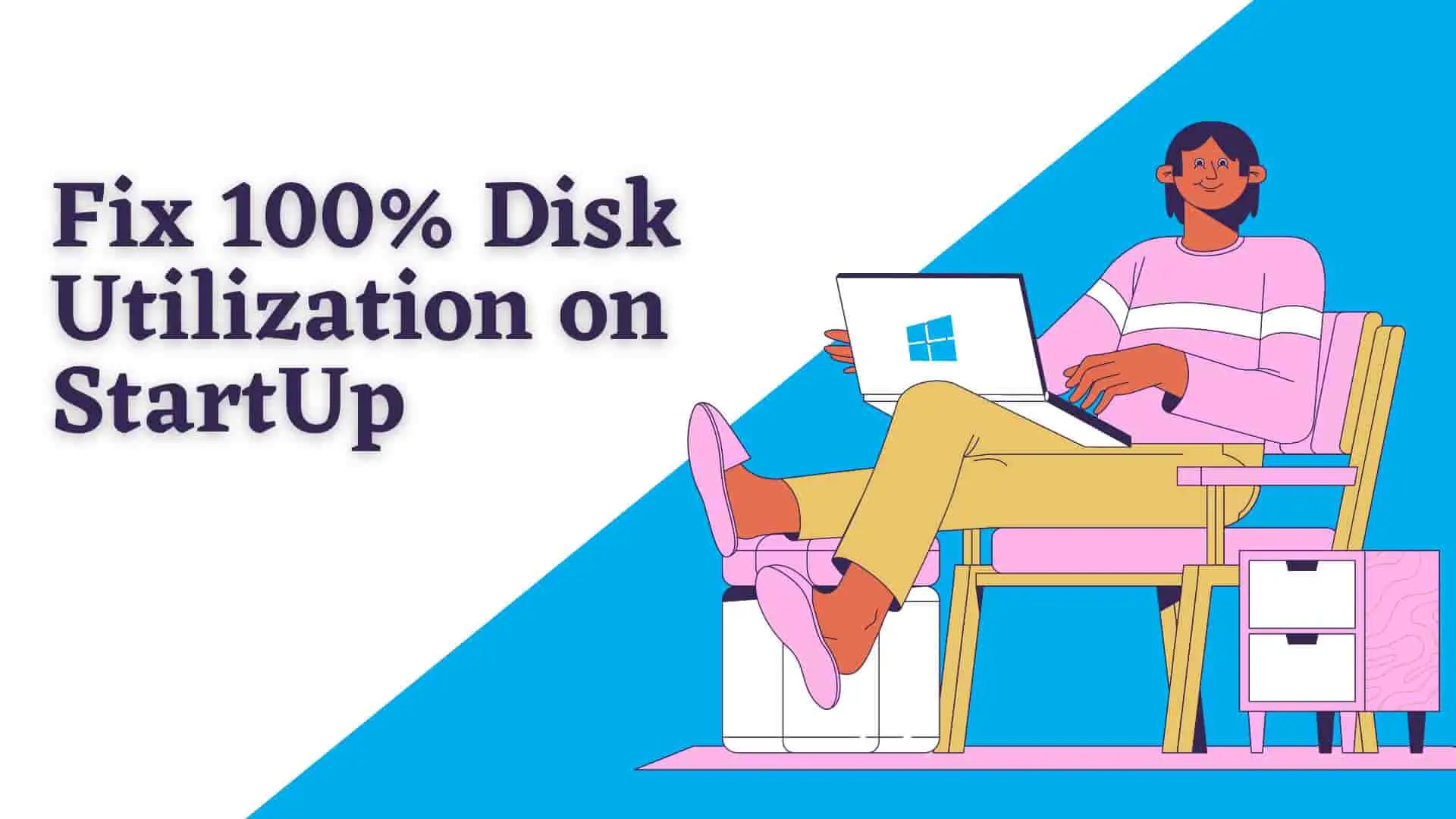Mobile Mastery: Transforming Work Habits with 8 iOS Productivity Techniques

Have you ever opened up your computer/laptop only to see it extremely slow and not functioning as you would like to? One of the reasons for this is 100% disk utilization during startup. This problem can be seen if you open up task manager and go to the performance tab.
There are a few reasons that this might be happening. Here, we have listed some causes and fixes so that this problem doesn’t need to be dealt with again.
There are a few reasons you might see this problem on your PC. The primary culprit tends to be the hardware itself. Using an HDD instead of an SSD can be the main cause. Here, we have listed other reasons in short.
The maximum disk use occurs when Windows accesses multiple files, drivers, and boot priority settings, among other things. This is common for all operating systems during startup. However, if it takes a long time, you must consider it and take action. Let's look at how to fix 100% Disk Utilization at Startup:
This is the easiest solution. Just not for the wallet. An HDD is inferior to SSD by design. HDDs are mechanical drives. They work with spinning parts so it takes more time to look for data. Especially during the time of boot, it’s easy to overload them. On the other hand, SSDs don’t have this problem. SSDs are made using chips and have low access times. Thus, having an SSD with windows instead of a hard disk can reduce your issue by a significant margin.
Having many applications starting up with the system can overload the best of drives. Disabling useless Startup applications can reduce the load being placed on the disk. This takes the disk utilization to 100% and lags the computer insufferably. Even if it’s for a short time. This tends to hinder productivity. Here is the step-by-step on how to disable them:
Ctrl+Shift+EscStartup sectionA lot of malware or virus can cause 100% disk utilization upon startup. Most viruses are designed with malice or annoyance in mind. Therefore, they tend to have bad sectors that load up the drive. However, checking for viruses with windows defender is super simple in the modern day. Here is a step-by-step guide on how to do so:
Superfetch is a service that pre-loads the applications that you open a lot. However, it also tends to use a huge amount of disk resources. Here’s how to disable it
MSI mode slows computers down by a large margin taking up a lot of system resources. This might also be the reason for 100% disk utilization in your PC during or after startup.
Windows + Rdevmgmt.mscSome apps like Discord and Spotify move to the background when you hit the close button. Many apps can be taking up system resources without being of any use. Here’s a step-by-step on how to close them.
Not having the latest version of windows can also be the cause of a slow PC with 100% disk utilization. You should make sure that you have the latest update of windows installed. You can check out which is the latest update here.
If all the above steps don’t resolve 100% disk usage, it might be time for a driver update. You can check out your laptop’s driver at the official site of the OEM (Original Equipment Manufacturer). For my driver updates and checks, I go to Lenovo and type in my model number. The website automatically detects the hardware by downloading an app. After that, it suggests automatic driver updates.
Once the PC runs out of RAM, it uses a virtual page file on the disk. To solve this problem, you are suggested to install more RAM on your PC. While looking at computers, most people nowadays look for at least 8 Gigabytes of RAM. However, as of recent times, people are leaning more towards a 16 Gigabyte machine.
For best performance, make sure that the power plan is set to “high performance” and not “power saving” in settings. The high-performance mode can be accessed anywhere from the control panel to the battery icon on the taskbar of the PC.
Windows tends to make a ton of temporary files for smooth functionality of the device and the operating environment. Some of these files are deleted by default and some aren’t. To delete them, you have to follow the following steps:
When Windows fails to boot or takes a long time to boot due to a corrupted Windows file, use the following command to check and restore Windows Health.
First open Command Prompt, and then press Win + R key and then type cmd. This will open a command prompt. Next type the following command line by line.
SFC /scannow
DISM /Online /Cleanup-Image /CheckHealth
DISM /Online /Cleanup-Image /ScanHealth
DISM /Online /Cleanup-Image /RestoreHealth
After the scan in the preceding steps is completed, please check your computer for available updates. If available please update it.
Conclusion:
In this manner, you can resolve 100% of Disk Usage issues that arise during Windows OS startup.
Article by Adamya Neupane






